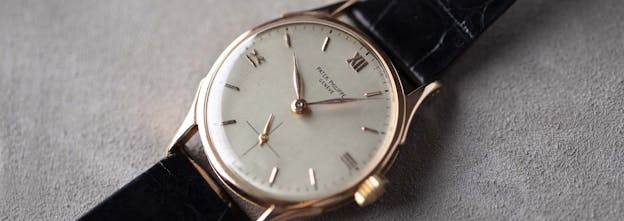The Invention of the Wristwatch: A Complete History from Pocket to Wrist
Early Timekeeping and the Mechanical Clock
Historians trace the first mechanical clocks to around 1275 in England, including an early minute-repeater installed at Salisbury Cathedral. Italy soon followed with astronomical clocks and chiming systems to mark hours and days. Blacksmiths forged these early mechanisms by hand, including large bells that could be heard throughout towns, long before the invention of dials and hands.
By 1462, personal timekeeping entered the conversation with the appearance of the “pocket clock,” the earliest reference to what we now call pocket watches.

The Rise of Swiss Watchmaking
The Swiss watchmaking tradition began in the mid-1500s as jewelers shifted professions due to religious bans on decorative jewelry. With innovations in materials like brass, bronze, and silver, Swiss craftsmen helped establish the early foundations of horology. The pocket watch became a staple of aristocratic fashion, especially after Charles II popularized waistcoats, which provided a perfect place to stow them securely.
These early timepieces lacked glass protection. Instead, hinged cases and skeletonized covers protected delicate hands until glass became widespread in the 1600s. Though rare, wrist-worn watches began to appear in the 19th century, particularly as jewelry for women.

Who Made the First Wristwatch?
While wristwatches date back centuries, the first known design is credited to Abraham-Louis Breguet, who crafted a bracelet-style timepiece in 1810 for the Queen of Naples. In 1868, Patek Philippe followed suit with a bracelet watch for Countess Koscowicz of Hungary. These were bespoke pieces, seen more as jewelry than tools.

Mass Production and Wartime Innovation
The 19th century ushered in mass production. Companies like Waltham Watch Co. in the U.S. used assembly-line methods to produce watches affordably and reliably, expanding access to timekeeping beyond the elite. This set the stage for wristwatches to become more practical — and more popular.
The Wristwatch in Military Service
By the early 1900s, wristwatches gained traction among aviators and officers. Girard-Perregaux supplied German naval officers with wristwatches in the 1880s, and Louis Cartier designed the Cartier Santos in 1904 for pilot Alberto Santos-Dumont.
During World War I, soldiers realized the value of wristwatches for synchronization and visibility in combat. Trench watches, adapted from pocket movements, became essential tools. Watchmakers promoted their models heavily, and by war’s end, public demand for wristwatches had soared.

1916: The Cultural Turning Point
The turning point came in 1916, when The New York Times published an article acknowledging the wristwatch’s emergence as a permanent fixture in modern life, no longer a “silly ass fad” or mere novelty. The article noted their practicality in wartime and civilian life alike.
That same year, Govberg Jewelers, our original brand, was founded in Philadelphia. More than a century later, we chose to rebrand as The 1916 Company to honor this legacy and the historical significance of that year. The parallel between the cultural ascent of the wristwatch and our own origins is a lasting point of pride.

The Evolution of Modern Watches
Following the war, horological innovation accelerated. The first automatic movement emerged in 1923. By the 1930s, Jaeger-LeCoultre had released the Reverso, designed for polo players who needed a way to protect their crystals during matches.

Brands like Rolex, Breitling, and Omega drove innovation in waterproofing, chronographs, and design. The 1970s quartz revolution introduced electronic movements, eventually giving rise to today’s smartwatch industry.
From Utility to Legacy: Today’s Wristwatch
Whether mechanical, automatic, or quartz, the wristwatch remains a symbol of personal expression and craftsmanship. With styles ranging from rugged tool watches to refined dress timepieces, modern watches blend history with innovation, and remain treasured heirlooms and daily companions alike.
Explore The 1916 Company’s curated selection of Audemars Piguet, F.P. Journe, Breguet, and more in our pre-owned luxury watch collection.
Frequently Asked Questions
- Q: When was the wristwatch invented?
A: While early wristwatches appeared in the early 19th century, they were popularized in the early 20th century, especially during and after World War I, due to their practicality in combat and daily life. - Q: Who made the first wristwatch?
A: Abraham-Louis Breguet is credited with the first wristwatch in 1810, made for the Queen of Naples. Patek Philippe followed in 1868 with a bracelet watch for Countess Koscowicz of Hungary. - Q: Why did wristwatches replace pocket watches?
A: Wristwatches offered superior convenience, especially in military settings where quick time checks were essential. After World War I, soldiers and civilians alike embraced wristwatches for their practicality and style. - Q: What is the difference between a pocket watch and a wristwatch?
A: A pocket watch is typically carried in a pocket and often attached to a chain, while a wristwatch is worn on the wrist with a strap or bracelet. Wristwatches became more popular in the 20th century due to their convenience and practicality. - Q: When did wristwatches become popular for men?
A: Wristwatches became widely popular among men during and after World War I, when soldiers found them more practical than pocket watches in combat situations. - Q: Why were wristwatches originally worn by women?
A: Early wristwatches were often considered fashionable jewelry and were primarily worn by women. It wasn’t until military needs arose that men began to adopt wristwatches widely. - Q: Who invented the automatic wristwatch?
A: The first self-winding (automatic) wristwatch was developed by John Harwood in 1923, paving the way for mechanical watches that didn’t require manual winding. - Q: What was the first brand to mass-produce wristwatches?
A: Companies like Girard-Perregaux and Waltham were among the first to mass-produce wristwatches for military use in the late 19th and early 20th centuries. - Q: Are wristwatches still relevant today?
A: Yes. Wristwatches remain popular as both functional tools and fashion accessories, despite the rise of smartphones and smartwatches. Many collectors appreciate their craftsmanship and heritage.

